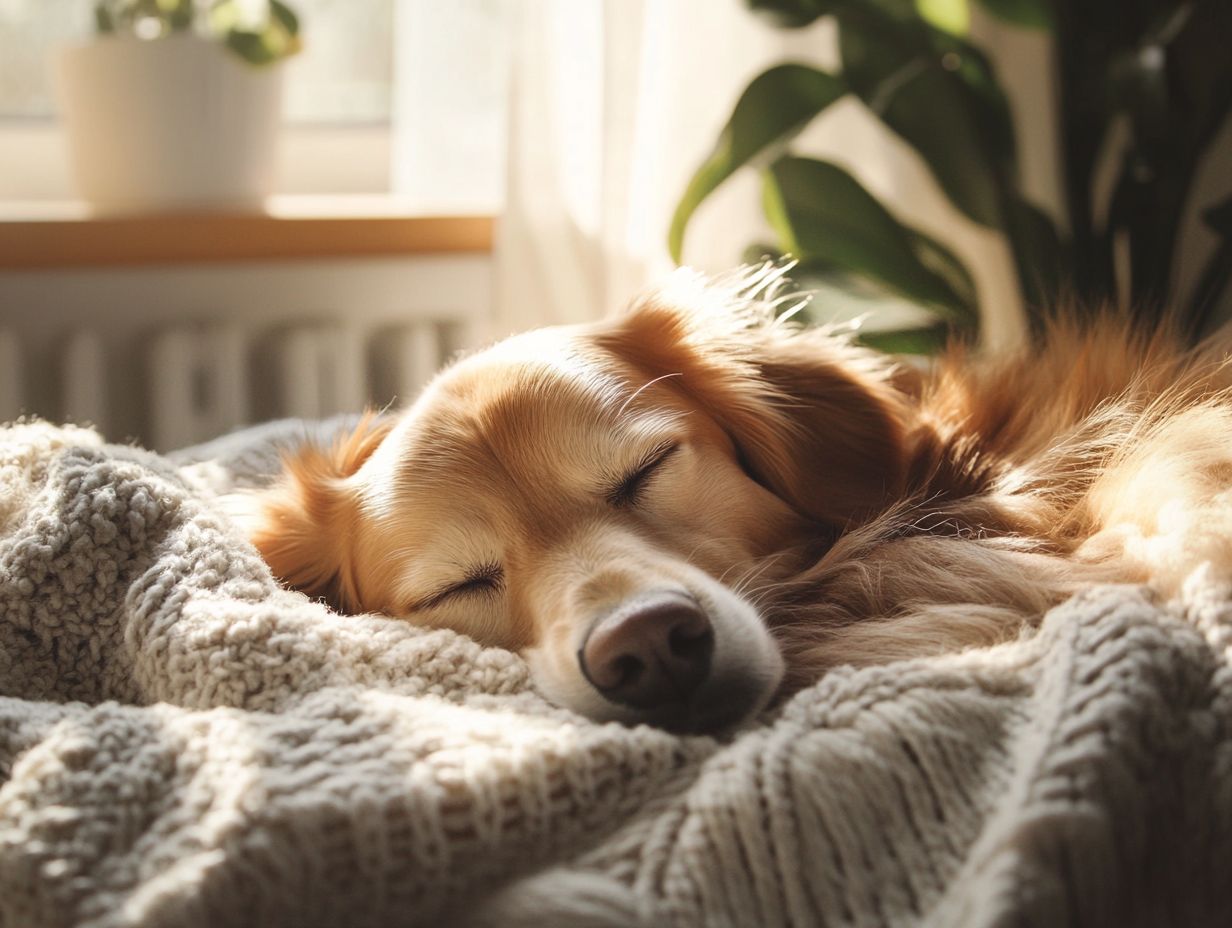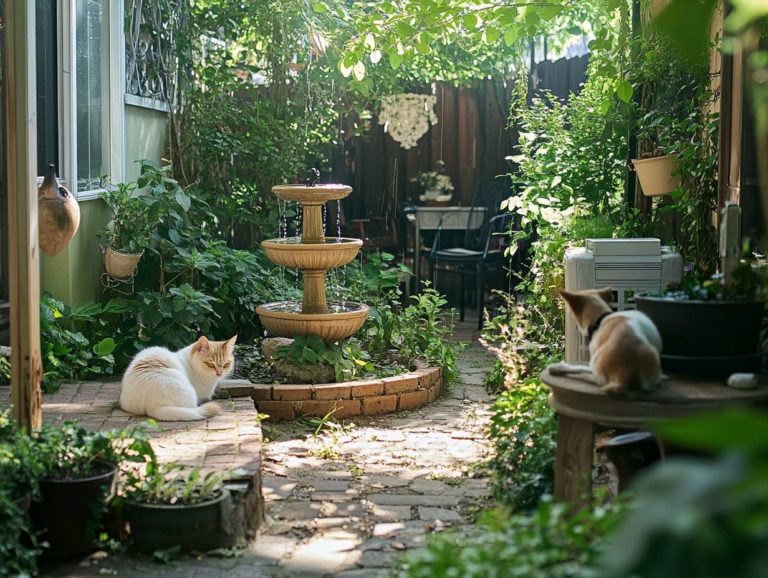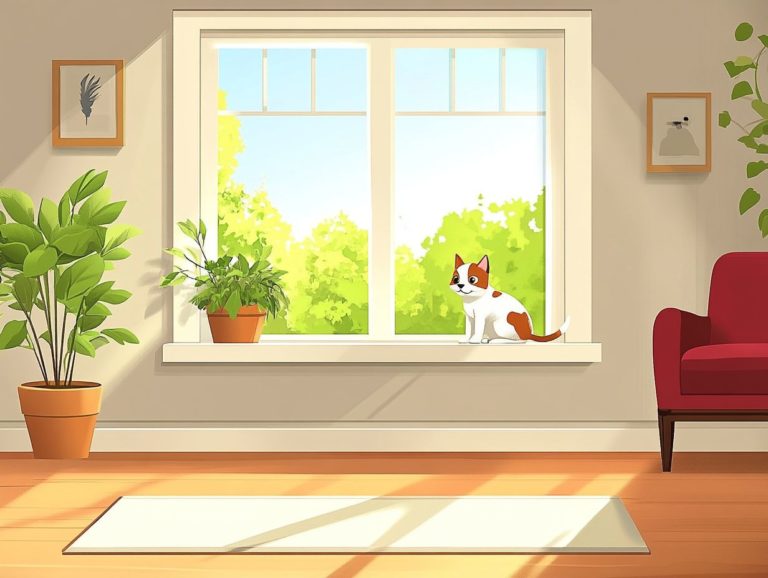How to Use Textures to Calm Anxious Pets
Creating a nurturing environment for your furry friends involves much more than just food and playtime. The textures surrounding them can significantly influence their comfort and overall well-being.
It s essential to understand how different materials affect your pet s mood, especially when anxiety starts to creep in. You ll explore the signs of anxiety in pets, discover how specific textures can soothe them, and gain practical tips for integrating calming elements into your home.
With just a few thoughtful changes, you can help your pet feel more at ease and secure in their environment.
Contents
- Key Takeaways:
- The Impact of Textures on Pets
- Signs of Anxiety in Pets
- Using Textures to Calm Anxious Pets
- Creating a Calming Environment
- Other Strategies for Reducing Pet Anxiety
- Frequently Asked Questions
- How can textures be used to calm anxious pets?
- What types of textures are best for calming anxious pets?
- How should I introduce textures to my anxious pet?
- Can textures be used with other calming techniques?
- Are there textures to avoid for anxious pets?
- How often should I use textures in my pet’s routine?
Key Takeaways:

- Textures can calm anxious pets by providing sensory stimulation and promoting relaxation.
- Recognizing behavioral cues is key. Look for signs like pacing, hiding, and excessive grooming to identify anxiety.
- Incorporating textures like soft blankets, chew toys, and scented items can help. Consider using special blankets that help calm nervous pets or a calming diffuser for extra support.
The Impact of Textures on Pets
Textures significantly impact the well-being of pets, especially when providing comfort and security for dogs facing anxiety. The surfaces your dog interacts with like the softness of an anxiety blanket or the roughness of enrichment activities can greatly influence their feelings and reactions to their surroundings.
By understanding these textures, you can create safe spaces and calming environments tailored to your dog’s emotional needs. Incorporating white noise to soothe anxious pets ultimately promotes their mental well-being and helps alleviate anxiety symptoms during stressful moments.
Understanding How Textures Affect Pets
Understanding how textures influence your pets is essential for you as a pet parent wanting to ease anxiety with visual barriers to calm pets and other effective strategies and tools.
Different textures can play a big role in creating calming environments for your animals. For instance, soft fabrics provide a sense of security as your pets snuggle against them, while textured toys can engage their senses and distract them from stress. Learning about play therapy for anxious pets can further enhance their comfort. The contrast between rough and smooth surfaces can encourage exploration and engagement, boosting mental stimulation.
By incorporating sensory experiences like plush beds or crinkly toys you can create comfort strategies tailored to your pet’s unique preferences. This fosters a more serene atmosphere.
Signs of Anxiety in Pets
Recognizing signs of anxiety in pets is crucial for pet parents who want to offer timely support. When your dog shows signs of stress, particularly during moments of separation anxiety or fear, being aware of these cues lets you respond effectively and support your furry friend.
Identifying Behavioral Cues

Identifying behavioral cues associated with your pet s anxiety is important for developing effective calming strategies and providing the right support for your dog.
You may notice your furry friend showing signs like excessive drooling, pacing, or even destructive behavior when they’re stressed. These more obvious signs often appear alongside subtle indicators, such as pinned-back ears, avoidance of contact, or trembling.
By recognizing these cues, you can tailor stress management techniques to your dog s needs and use calming aids like anxiety wraps or soothing music to help ease their distress.
Understanding specific triggers whether it s loud noises, unfamiliar environments, or separation from you can enhance your approach to reducing anxiety and creating a more relaxed atmosphere for your beloved pet.
Using Textures to Calm Anxious Pets
Utilizing textures as calming aids can effectively help pet parents alleviate anxiety in their dogs. Introducing comforting items such as anxiety blankets and sensory toys, along with games to alleviate pet anxiety, can create a soothing environment that promotes relaxation and peace for your furry companion.
Start implementing these strategies today to provide your pet with the comfort they need!
Effective Techniques and Tools
Effective techniques for calming your anxious pets involve sensory stimulation and interactive activities. These should be tailored to engage and comfort your dogs.
Using calming products like wraps that help reduce anxiety, devices that release calming scents, or natural supplements can greatly reduce their stress levels. Engaging activities, such as puzzle toys or scent work, not only distract your pets but also challenge their minds, providing them with a sense of purpose and fulfillment.
Incorporating sensory stimulation methods, like gentle music or soft lighting, can create a soothing environment that promotes relaxation. Using these strategies lets you customize your approach to meet the specific needs of your anxious companions, ultimately fostering a tranquil and secure atmosphere for them.
Creating a Calming Environment
Establishing a soothing environment is crucial for pet parents dedicated to offering their dogs a safe haven, particularly for those grappling with anxiety, fear, or stress. By thoughtfully crafting such a space, you can ensure your furry companions feel secure and comforted in their surroundings.
Your pets deserve the best; let’s create that safe haven together!
Incorporating Textures into the Home

Incorporating a variety of textures into your home can improve your pets’ comfort and well-being, providing them with essential calming experiences. For instance, using scent training to calm anxious pets can be particularly effective in alleviating anxiety.
You can achieve this by thoughtfully adding soft blankets, plush rugs, and cozy cushions that invite your furry companions to unwind. Toys that engage their senses, such as textured toys and calming mats, offer a soothing distraction during stressful moments.
Choosing natural materials like cotton and wool further contributes to a tranquil atmosphere, ensuring your home remains a safe haven.
By creating a space that embraces these comforting textures, you not only benefit your pets but also cultivate a serene ambiance for everyone in your household.
Other Strategies for Reducing Pet Anxiety
Along with incorporating various textures, you can explore a multitude of strategies and techniques to calm anxious pets before training designed to effectively alleviate your pet’s anxiety and elevate their overall well-being.
Additional Tips and Tricks
Additional tips and tricks for managing pet anxiety can empower you to create a supportive environment for your dog while effectively identifying anxiety triggers.
Understanding that each dog is unique is crucial; what might scare one dog may leave another completely unfazed. Take the time to observe your dog’s reactions to various stimuli loud noises, unfamiliar faces, and changes in routine often serve as significant triggers. By keeping a journal of these observations, you can pinpoint specific situations or environments that cause distress.
Once you recognize these triggers, you can implement comfort strategies, such as creating a safe space filled with calming scents or familiar toys.
Positive reinforcement through treats and praise when your dog displays calm behavior can encourage resilience and adaptability in the face of fear. These techniques not only calm your pet but also deepen your special bond.
Frequently Asked Questions
Here are some common questions about calming anxious pets.
How can textures be used to calm anxious pets?

Textures can be used as a form of sensory therapy to help soothe and relax anxious pets. Additionally, using aromatherapy to calm anxious pets can further enhance their relaxation. By providing a variety of textures, your pet can engage in tactile stimulation that can reduce stress and anxiety.
What types of textures are best for calming anxious pets?
Soft, plush textures such as fleece, microfiber, and velvet are great for calming anxious pets. These materials are gentle and comforting and can mimic the feeling of being snuggled up to their mother or littermates. Additionally, understanding the impact of home décor on pet anxiety can further enhance your pet’s comfort.
How should I introduce textures to my anxious pet?
Start by slowly introducing one texture at a time. Place the texture near your pet and allow them to approach it on their own terms. Encourage them with treats and praise when they show interest or interact with the texture.
Can textures be used with other calming techniques?
Yes, you can combine textures with calming techniques like aromatherapy, music, and massage. Together, they create a peaceful and relaxing space, highlighting the importance of calm spaces for anxious pets.
Are there textures to avoid for anxious pets?
Yes, steer clear of rough or scratchy materials that may irritate your pet. Always watch how your pet reacts and make changes if needed.
How often should I use textures in my pet’s routine?
Try to include textures regularly in your pet’s life. Simple additions, like a soft blanket or a textured toy, can help during stressful times or playtime.






